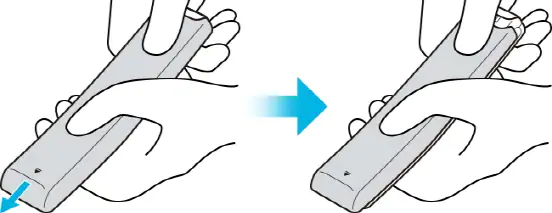At some point in time, all people have to replace the batteries in their remote control. At this point, it’s not immediately possible to figure out where the battery compartment is. Since the design of the new Samsung Smart TV has changed quite a bit, and therefore it can be not easy. So you should figure it out in order to be able to use your Samsung Smart TV fully. Obviously, using the remote control will allow you to watch different content much more comfortably.
There is also a control panel on the back of the TV so that you can do all the same things. But it’s best to figure out how to replace the batteries and how to put them in the compartment. It’s also important to insert the new batteries in the right order. So to do all these steps, follow the instructions.
What to do to remove a battery from a Samsung Smart TV remote?
Before you start figuring out how to remove a battery from a Samsung Smart TV remote, you must first determine which remote you have. Since there are two variants of remote control for Samsung Smart TV. The first option, and more familiar to most people, is a large black remote control with voice control and a few extra buttons. This remote control has a standard look and comes with most Samsung TVs. The second type of remote control is an aluminum one with a more minimalist design with a slim body. This remote control doesn’t have many buttons, that is, there are no additional functions.
If you have a big black remote, you’ll probably intuitively know the steps to follow since it’s similar to any other remote. The model of this remote control is slightly curved and has a wider look. Many people don’t like this model because sometimes you have to use a sharp object to open the cover to remove the batteries. So to remove a battery from a Samsung Smart TV remote, you need to open the back cover by sliding it down, as shown in the instructions from Samsung:

If you have a more modern model of Samsung TV remote, you will have a different battery replacement process. The model of this remote has a more minimalist look, also, this remote is narrower and slightly longer. So to remove a battery from a Samsung Smart TV remote, you need to turn the remote to the back and find a small button, then press the button and slide the panel with the buttons up, as shown in the instructions from Samsung:

What do you do to remove the battery from a standard Samsung TV or solar remote?
Once you have opened the Samsung TV cover, following the instructions, you need to figure out how to remove the batteries to insert new ones. If you have a remote as described in the first method, an older model, you need to find the recess with an arrow down, slide it down, and lift it. Then open the cover and add the batteries inside.
So this method will work for almost all older Samsung TV models. Since the back of the remote in. all models used to be the same. Usually, I also use a sharp object to remove the batteries to make them more convenient.
If you have a newer aluminum model, you need a different method. If you have one of the latest Samsung TV models, you may have a remote with solar batteries. Usually, you can’t remove the cover of such a remote because such remotes are powered by a built-in battery and don’t have regular batteries or compartments. If your remote control is monolithic, it has built-in solar panels. So you don’t need to change the batteries because its performance will last throughout the life of the TV.
What batteries do you need for your Samsung Smart TV remote?
Once you’ve figured out how to remove the batteries from your remote, you need to know what batteries to replace the old ones. Usually, you need two AA or AAA batteries for this type of remote control.
For the large Samsung Smart TV remote that opens with its fully retractable back panel, you’ll need 1.5V AA batteries.
For the old Samsung Smart TV remote, you will need two 1.5V AAA batteries.
You need to position the positive and negative ends correctly. You can see this by the engraving on the inside of the battery compartment of your remote control.






